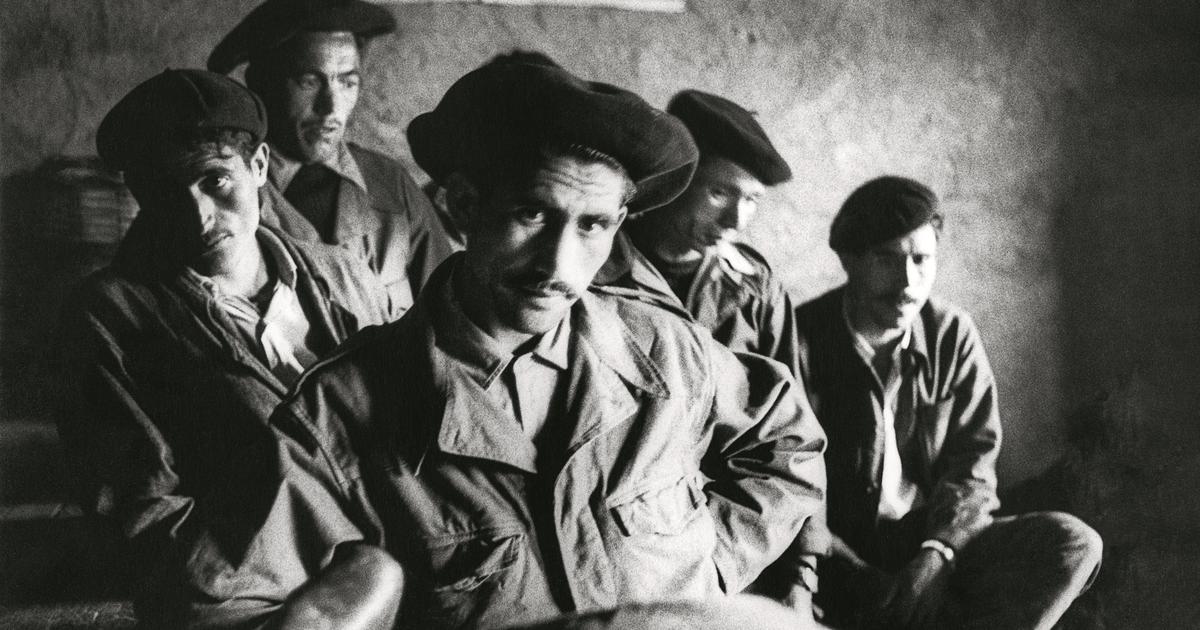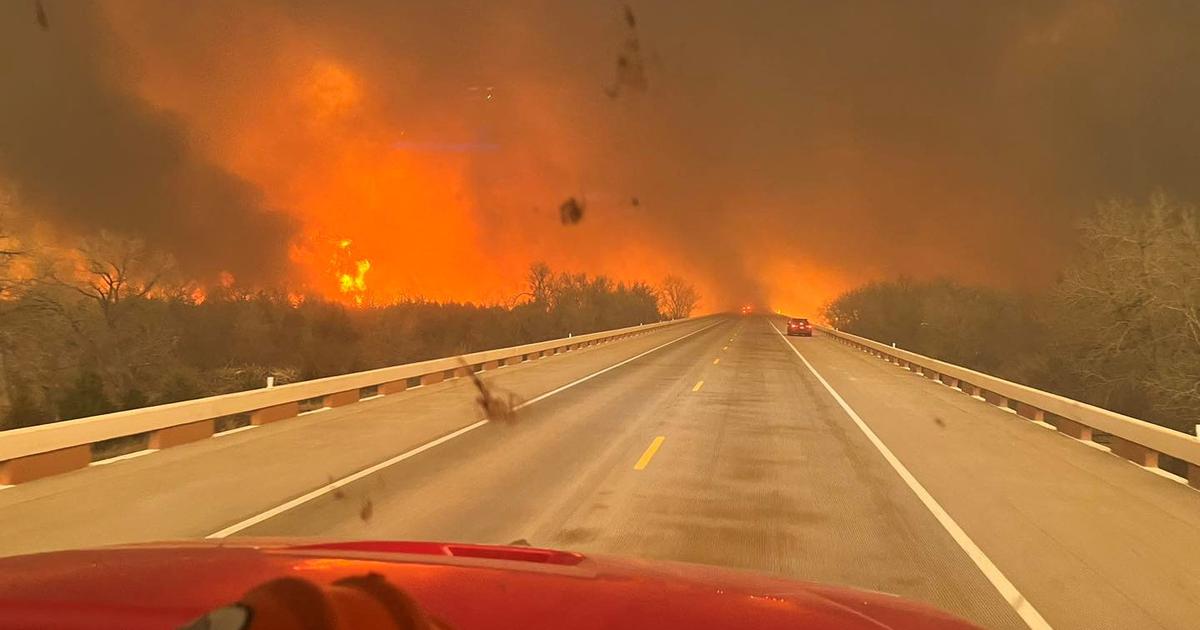California Governor Gavin Newsom called on the few states that have not yet issued confinement orders for their inhabitants. The federal government warned that if the ...
- Click to share on Facebook (Opens in a new window)
- Click to share on Twitter (Opens in a new window)
- Click to share on LinkedIn (Opens in a new window)
- Click to email a friend (Opens in a new window)
Trump extends coronavirus measures until April 30 3:53
(CNN) - The United States has already surpassed 5,000 deaths from the new coronavirus, and all but 11 states have issued sweeping orders for residents to stay at home, affecting nearly 96% of the country's population.
"What are they waiting for? What more evidence do they need? If you think it won't happen to you, there are test points across the United States, around the world, ”California Governor Gavin Newsom said Wednesday.
Newsom was the first governor to issue a state confinement order, in March, after health officials warned that social distancing measures would be the most effective in slowing down the spread of the virus.
- The world's largest coronavirus containment is having a dramatic impact on pollution in India
- The leading US coronavirus expert was forced to tighten security as death threats increase
Coronavirus: why New York is the most affected? 1:23 Even if Americans closely follow mitigation measures, the death toll in the United States could be at least 100,000, White House experts said this week. But without those measures, that number could even go as high as 2.2 million deaths, said Dr. Deborah Birx, coordinator of the crisis response group for the new White House coronavirus.
It was these types of aggressive measures that helped some areas "flatten their curve," says the director general of Health of the United States, Dr. Jerome Adams.
"The good news is that states like Washington, California, and countries like Italy, when they leaned toward aggressive mitigation, were able to flatten their curve," Adams told NBC.
"Governors can make the decisions, but we will give them the best possible guidance and that is staying at home and practicing social distancing," said Adams.
Since January 20, when the first case of coronavirus was detected in the United States, more than 226,370 patients have been diagnosed with covid-19 and 5,316 have died, according to the Johns Kopkins University count. At least 928 of those deaths were reported Wednesday, the highest number reported in the country since the start of the pandemic.
Under mounting pressure from local leaders and experts, governors in states like Florida, Georgia and Mississippi said they would also order residents to stay at home. Georgia Governor Brian Kemp also announced Wednesday that students would not be returning to school this school year.
"I want to encourage my fellow Georgians to hold on. I know they are tired of this, but we must first overcome the obstacles on our way, ”Kemp said, according to CNN affiliate WSB.
President Donald Trump said Wednesday that he would not issue a national confinement order because states have different infection rates.
“You have to look, you have to give a little flexibility. If you have a state in the Midwest, or if Alaska, for example, has no problem, it is very difficult to say that there is a quarantine. We have to have a little flexibility, "Trump said.
- California cities could see coronavirus outbreaks as severe as New York now has, authorities say
Mandatory quarantine for the state of California 4:01 States that have not issued confinement orders
The 11 states that have not issued statewide confinement orders include: Alabama, Arkansas, Iowa, Missouri, North Dakota, Nebraska, South Carolina, South Dakota, Tennessee, Utah, and Wyoming.
In Tennessee, Governor Bill Lee issued a "Safer at Home" order on Monday, directing all nonessential companies to close, at least until mid-April.
But critics of the guidelines point to the long list of services that are still considered essential, including building homes, hotels, accounting offices, landscape management, and religious facilities, and also say the order does not guarantee compliance.
"I don't think we have a lot of Tennesians who do not comply with this order, and we will be monitoring that, and if we find something different, then certainly decisions about the application of the law will be made," the governor said, according to the WZTV network, CNN affiliate.
Alabama, surrounded by states that have just announced that they will implement confinement orders, has not issued a similar order.
"Many factors have to do with a statewide confinement order," Governor Kay Ivey's Office told CNN affiliate WSFA, "and Alabama is not in a position where we are ready to make this decision. "
One of the governor's concerns is the impact the order would have on businesses and residents whose "well-being also depends on being able to have a job and support themselves and their families," the affiliate reported.
1 of 28 | Los Angeles, California - This is what downtown Los Angeles looked like on March 26, 2020 when authorities tightened traffic orders in the city and state to prevent the spread of the coronavirus. At that time, the United States already registered the largest number of cases of covid-19 in the world, above more affected countries such as Spain, Italy and China. (Credit: ROBYN BECK / AFP via Getty Images)
2 of 28 | Miami Beach, Florida - Miami authorities continue their efforts to prevent the spread of the coronavirus, so they closed Miami beaches and asked people to stay home and avoid departures, unless they were essential activities. . (Credit: Joe Raedle / Getty Images)
3 of 28 | Key West, Florida - This is what Highway 905 looked like on March 22, 2020, about 100 miles south of Miami. The Florida Keys were closed to visitors, as well as the surrounding hotels, due to the covid-19 pandemic. (Credit: CHANDAN KHANNA / AFP) (Photo by CHANDAN KHANNA / AFP via Getty Images)
4 of 28 | San Diego, California - On March 20, a large number of cars were parked at a car rental center at San Diego International Airport, California. Tourism in the city was dramatically affected by the isolation order to prevent the spread of the coronavirus. (Credit: Sean M. Haffey / Getty Images)
5 of 28 | Tijuana, Baja California, Mexico - The San Ysidro International Bridge, on the border between Mexico and the United States, is one of the largest land border crossings between San Diego and Tijuana. This was how it looked on March 21, 2020 when both countries agreed to restrict non-essential travel due to the coronavirus outbreak. (Credit: Guillermo Arias / AFP) (Photo by GUILLERMO ARIAS / AFP via Getty Images)
6 of 28 | San Diego, California - This is what the parking lot of the San Diego Zoo looked like on March 20, due to mobility restrictions due to the global coronavirus pandemic. The zoo closed on orders from the authorities. (Sean M. Haffey / Getty Images)
7 of 28 | Rio de Janeiro, Brazil - An aerial view of the beaches of Ipanema, in Rio de Janeiro, on March 26, 2020. At that time, Brazil had more than 2,600 confirmed cases of coronavirus and at least 63 deaths. (Credit: Buda Mendes / Getty Images)
8 of 28 | Rio de Janeiro, Brazil - The Saara region, a renowned commercial area in downtown Rio de Janeiro, looked nearly empty on March 24 during a confinement order to stop covid-19 cases in the country. At that time, Brazil reported more than 2,200 cases of coronavirus and at least 46 deaths related to the pandemic. (Credit: Buda Mendes / Getty Images)
9 of 28 | Bogotá, Colombia - The emblematic Plaza de Bolivar in Bogotá looked empty on March 25 in the morning. The city came from a preventive isolation ordered by the local administration, which joined the mandatory isolation order ordered by the national government as of March 25, 2020, a measure that seeks to prevent the spread of the coronavirus in the country. (Credit: Raul ARBOLEDA / AFP) (Photo by RAUL ARBOLEDA / AFP via Getty Images)
10 of 28 | Bogotá, Colombia - In this photo of the empty streets of Bogotá due to the mandatory isolation order throughout the country, only one Transmilenio bus was traveling on March 25. (Credit: RAUL ARBOLEDA / AFP via Getty Images)
11 of 28 | Mexico City, Mexico - This is how El Zócalo, in the Mexican capital, looked on March 25, 2020 around 8 a.m., when other main squares in Latin America, which would normally be full of people, were left empty by the coronavirus. (Credit: ALFREDO ESTRELLA / AFP via Getty Images)
12 of 28 | Guadalajara, Mexico - The Plaza de la Liberación in Guadalajara was empty on March 25, 2020 around 8 am, when at other times it would be full of visitors. This is part of the measures of local authorities to prevent the spread of the coronavirus epidemic. (Credit: ULISES RUIZ / AFP via Getty Images)
13 of 28 | Quito, Ecuador - The Plaza Grande in Ecuador, with the Carondelet Palace in the background, was completely empty by March 19. The central government decreed a state of emergency and restricted the movement of people to stop the spread of covid-19. Ecuador is one of the countries in the region most hit by the coronavirus. (Credit: RODRIGO BUENDIA / AFP) (Photo by RODRIGO BUENDIA / AFP via Getty Images)
14 of 28 | Buenos Aires, Argentina - Libertador Avenue in Buenos Aires, totally empty on March 20, 2020. President Alberto Fernández announced on March 19 a "preventive and mandatory" confinement of the population until March 31 to stop the spread of the coronavirus pandemic. (Credit: RONALDO SCHEMIDT / AFP via Getty Images)
15 of 28 | Buenos Aires, Argentina - 9 de Julio Avenue, one of the most important and busiest in Buenos Aires, was practically empty due to restrictions on mobility due to the coronavirus. This photo was taken on March 20, 2020. (Credit: RONALDO SCHEMIDT / AFP via Getty Images)
16 of 28 | Panama City, Panama - The President of Panama, Laurentino Cortizo, declared on March 24 a total quarantine to contain the rapid expansion of the new coronavirus, which registered, at that time, 443 infections and eight deaths in the Central American country. This is how a main road of the Panamanian capital looked that day. (Credit: Luis ACOSTA / AFP) (Photo by LUIS ACOSTA / AFP via Getty Images)
17 of 28 | Guatemala City, Guatemala - The Calzada Aguilar Batres looked empty on March 24, 2020 due to the mandatory isolation measure decreed by the central government. (Credit: CARLOS ALONZO / AFP via Getty Images)
18 of 28 | Guatemala City, Guatemala - View of the Incense Bridge in the Guatemalan capital on March 24, 2020. The country's authorities announced a curfew from 4 pm to 4 am to prevent the spread of coronavirus in the country. (Credit: CARLOS ALONZO / AFP via Getty Images)
19 of 28 | Santiago, Chile - On March 22, 2020, the crowded capital of Chile looked empty due to a curfew in force from 10:00 p.m. to 5:00 a.m. President Sebastián Piñera decreed a state of catastrophe for the outbreak at that time. (Credit: MARTIN BERNETTI / AFP) (Photo by MARTIN BERNETTI / AFP via Getty Images)
20 of 28 | Los Andes International Pass, Chile - This is how the empty roads of Los Libertadores International Pass looked like in Los Andes, Chile, on March 18, 2020 when the country already had 238 cases of coronavirus. President Sebastián Piñera decreed a state of catastrophe for the outbreak at that time. (Credit: JAVIER TORRES / AFP via Getty Images)
21 of 28 | New Delhi, India - India imposed mobility restrictive measures on March 23 to prevent the spread of coronavirus. This is how the deserted roads of New Delhi looked, which along with 75 other districts were left empty by the measures. The measure ordered the closure of shops, commercial establishments, factories, workshops, offices, markets and places of worship, and travel on buses and interstate subways. (Credit: PRAKASH SINGH / AFP via Getty Images)
22 of 28 | Berlin, Germany - The traffic circle at Victory Column, which is often crowded with cars at rush hour, was nearly empty during the coronavirus crisis on March 23, 2020 in Berlin, Germany. Germany's public life was restricted to essential duties in an effort by the authorities to decrease infections. (Credit: Sean Gallup / Getty Images)
23 of 28 | Wuhan, China - A bullet train leaves the Wuhan railway station in central China's Hubei province. On March 24, when this photo was taken, China announced that it would lift the confinement affecting more than 50 million people in the central Hubei province, where the coronavirus first emerged in late 2019. (Credit: STR / AFP via Getty Images)
24 of 28 | West Bank, Palestine - This photograph taken on March 23, 2020 shows an aerial view of the construction site of a field hospital to house coronavirus patients in Rafah, in the south of the West Bank. The UN warned that an outbreak of covid-19 in the West Bank could be disastrous, given the high poverty rates and the weak health system in the coastal strip under the Israeli blockade since 2007. Authorities in Gaza have said that more than 2,700 Palestinians are in their homes in isolation, the majority of whom have returned from Egypt. (Credit: SULIMAN HEJI / AFP via Getty Images)
25 of 28 | Mecca, Saudi Arabia - The Grand Mosque in the city of Mecca is the holiest place in Islam. This was how it looked on March 6, 2020 when attendance at prayer Friday was canceled by measures to stop the spread of the coronavirus. (Credit: BANDAR ALDANDANI / AFP via Getty Images)
26 of 28 | Mecca, Saudi Arabia - This photo taken on March 22, 2020 a deserted road near the Jama Masjid mosque during a Janata national curfew imposed as a preventive measure against covid-19 in the old neighborhoods of New Delhi. (Credit: JEWEL SAMAD / AFP via Getty Images)
27 of 28 | Bangkok, Thailand - Large numbers of tourist buses were stopped in a parking lot near Bangkok's Suvarnabhumi Airport on March 8, 2020, due to health measures to prevent the spread of coronavirus in the city. (Credit: MLADEN ANTONOV / AFP via Getty Images)
28 of 28 | Mecca, Saudi Arabia - The Grand Mosque in the city of Mecca is the holiest place in Islam. This was how it looked on March 6, 2020 when attendance at prayer Friday was canceled by measures to stop the spread of the coronavirus. (Credit: BANDAR ALDANDANI / AFP via Getty Images) Up to 16,000 New Yorkers could die
In New York, Governor Andrew Cuomo last month ordered that all non-essential workers stay home.
On Wednesday, he cited a model that showed that up to 16,000 New Yorkers could die from the virus.
"If you believe these numbers, 16,000 deaths in New York, that means they will have tens of thousands of deaths outside of New York," said the governor. "So as people look at their Kansas nightly news and say, well, this is a New York problem, that's not what these numbers say."
"[The model] Says it's a New York problem today. Tomorrow is a Kansas problem and a Texas problem and a New Mexico problem. So I say to my fellow governors and elected officials across the country, look at us today, see you tomorrow, ”he said.
New York State, now the epicenter of the pandemic, has reported at least 92,381 cases and 2,373 deaths. At least 51,089 of those infections and 1,374 of the deaths are in New York City.
This week, the Federal Emergency Management Agency dispatched hundreds of ambulances, emergency response personnel, and paramedics to New York City to assist first responders.
Emergency medical services (EMS) have received a record number of emergency calls each day, a 50% increase over the volume of normal daily calls, the New York City Fire Department said in a statement.
On Tuesday alone, the New York Fire Department's Office of Emergency Medical Services (FDNY EMS) answered 6,010 medical calls, Department spokesman Jim Long told CNN.
Healthcare workers say walking inside city hospitals is like entering a war zone.
New York hospitals still need 3.3 million N95 masks, 2.1 million surgical masks, 100,000 isolation gowns and 400 respirators by April 5, Mayor Bill de Blasio said Wednesday.
De Blasio warned that this Sunday will be a crucial day for the city and that needs will continue to increase in the coming weeks.
Cuomo: No American is immune to the coronavirus Exam may be ready this month that could identify those with viruses
Doctors and nurses across the country have found themselves on the front lines of the crisis, responding to patients who are constantly admitted.
Many hospitals have warned that they are running out of space and supplies. In Georgia, the governor said that on the first day of April there were at least 3,520 medical surgery beds, 450 hospital beds and 1,006 respirators available. But he cited a study that showed the state could reach "maximum hospital capacity" in about three weeks.
And health care experts also say a shortage of staff while health workers test positive for the virus could delay the country's response to patients.
Dr. Birx of the White House said Wednesday that a test for antibodies to the coronavirus could be available "within this month," which could help health care workers identify who may have immunity to the virus.
"I really called all the universities and all the states that develop ELISA tests, you can buy the antigens and controls online, and really work to assess entire healthcare communities in your state and support them that way."
ELISA, or enzyme-linked immunosorbent test, detects and measures antibodies in the blood. If successful, the test could help identify those who have already had the virus but have recovered.
Experts have said that if a person has had the virus and developed antibodies, chances are they have built up immunity, and the chances of that person becoming infected again dramatically decrease.
That test could help identify medical workers who may have had the coronavirus and were unaware of it, Birx said.
“I think that really being able to tell you, the peace of mind that would be obtained from knowing that you were already infected, that you have the antibody, is safe from reinfection. 99.9% of the time, "he said.
- CNN's Jacqueline Howard, Elizabeth Hartfield, Joe Sutton, Lindsay Benson, and Matthew Hoye contributed to this report.
confinement





/cloudfront-eu-central-1.images.arcpublishing.com/prisa/P6ZR6RBRZ67Y5KKAUQCHBLW4GI.jpg)









